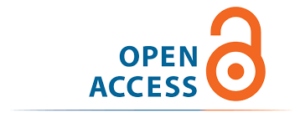ORIGINAL ARTICLE
Economic Impact of Identifying Non-Pathogenic Urinary Isolates in Hospitalized Patients: A Longitudinal Study Using Stepwise Diagnostic Stewardship Model
Bimalesh Yadav, Prasan Kumar Panda, Jaideep Pilania, Ravi Kant, Balram Ji Omar, Sandeep Saini, Vikas Kumar Panwar, Yogesh Arvind Bahurupi

JASPI June 2025 / Volume 3/Issue 2
Copyright: © Author(s). This is an open-access article distributed under the terms of the Creative Commons Attribution License, which permits unrestricted use, distribution, and reproduction in any medium, provided the original author and source are credited.
Yadav B, Panda PK, Pilania J, et al.Economic Impact of Identifying Non-Pathogenic Urinary Isolates in Hospitalized Patients: A Longitudinal Study Using Stepwise Diagnostic Stewardship Model. JASPI. 2025;3(2):Page no DOI:
ABSTRACT
Background: Urinary tract infections (UTIs) are among the most common reasons for antibiotic prescriptions in hospitalized patients. However, distinguishing pathogenic from non-pathogenic urinary isolates remains challenging. The inappropriate treatment of colonizers and contaminants can result in unnecessary antimicrobial use, contributing to resistance, adverse events, and increased healthcare costs.
Objective: This study aims to evaluate the economic impact of identifying non-pathogenic urinary isolates using a stepwise diagnostic model in hospitalized patients.
Methods: In this longitudinal observational study conducted over 24 months at a tertiary care hospital, adult inpatients with positive urine cultures were assessed. A stepwise model integrating clinical, laboratory, and microbiological parameters was applied to classify isolates as pathogenic or non-pathogenic. Outcomes including antibiotic usage (duration and cost), 30-day mortality, and hospital stay length were compared between patients with pathogenic and non-pathogenic isolates.
Results: Among 275 isolates, 249 (90.54%) were identified as pathogenic and 26 (9.45%) as non-pathogenic. Median antibiotic duration showed no significant difference (7 days (IQR: 5–7) for both groups). However, median antibiotic cost was significantly higher in the pathogenic group (Rs. 2440 vs Rs. 640; p < 0.001), with a large effect size (r = 0.48). The median hospitalization duration was similar between groups (12 days (interquartile range [IQR]: 7–19) vs 10 days (IQR: 5.25–17.75); p = 0.336). The 30-day mortality was 2.0% in the pathogenic group; no deaths were reported in the non-pathogenic group.
Conclusion: Recognizing non-pathogenic isolates can reduce inappropriate antibiotic use and associated costs without adversely affecting patient outcomes. Implementation of such a diagnostic approach can strengthen antimicrobial stewardship programs and improve healthcare efficiency.
Submit a Manuscript:
Copyright © Author(s) 2025. JASPI- Journal of Antimicrobial Stewardship Practices and Infectious Diseases.
